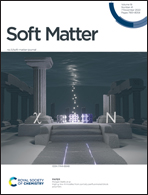Pulling simulation predicts mixing free energy for binary mixtures
Abstract
Predicting the mixing free energy of mixing for binary mixtures using simulations is challenging. We present a novel molecular dynamics (MD) simulation method to extract the chemical potential μ(X) for mixtures of species A and B. Each molecule of species A and B is placed in equal and opposite harmonic potentials ±(1/2)Uex(x) centered at the middle of the simulation box, resulting in a nonuniform mole fraction profile X(z) in which A is concentrated at the center, and B at the periphery. Combining these, we obtain Uex(X), the exchange chemical potential required to induce a given deviation of the mole fraction from its average. Simulation results for Uex(X) can be fitted to simple free energy models to extract the interaction parameter χ for binary mixtures. To illustrate our method, we investigate benzene–pyridine mixtures, which provide a good example of regular solution behavior, using both TraPPE united-atom and OPLS all-atom potentials, both of which have been validated for pure fluid properties. χ values obtained with the new method are consistent with values from other recent simulation methods. However, the TraPPE-UA results differ substantially from the χ obtained from VLE experimental data, while the OPLS-AA results are in reasonable agreement with experiment, highlighting the importance of accurate potentials in correctly representing mixture behavior.



 Please wait while we load your content...
Please wait while we load your content...